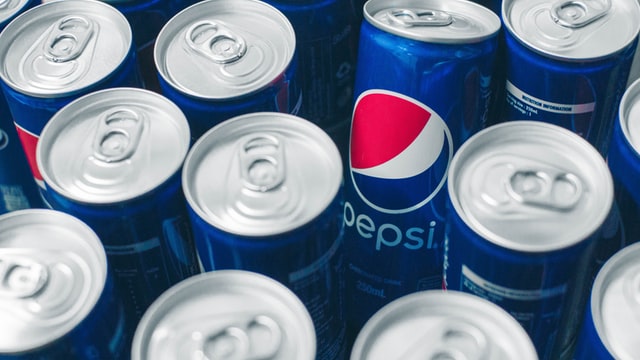‘Marketers’ lives matter’. Especially when they produce an ad that causes massive public outrage.
The ‘ad rage’ over the recent Kendall Jenner ad for Pepsi is one of the latest in a long list of big brand marketing mishaps. While the fallout from this ad may be a temporary chink in the armour of the corporation, it gives other companies an opportunity to reflect on how an ad like this can go wrong and compare it with the advertising that does work.
On this occasion, Pepsi’s in-house advertising department was accused of aligning its brand with the Black Lives Matter protests in the US. The idea, while arguably noble, backfired dramatically.
But why?
Benjamin Blank, CEO of Uproxx Media Group, plainly stated: “If Kendall Jenner actually did something that was meaningful and they documented that and supported that,” the results would have been different.
The advertisers on this occasion may have thought that they could predict how their target audience would react to this ad. But they didn’t. More bluntly, the presumed agenda and cynicism of the corporation was transparent.
Any ad campaign needs to genuinely understand the real thoughts and feelings of the market it is aiming to. While this may seem obvious (and it is), it’s amazing how many advertisers appear to forget about this from time to time and get their ads so monumentally wrong.
The voices inside the advertisers’ heads may imagine, even guess what some of their buyers think. But do they represent the same voices inside the customers’ minds? The people – the real people, the everyday general public – who they are selling to?
In a globalised world marked by what media scholar Brian McNair calls ‘cultural chaos’, advertising and branding is a minefield. What works in one location might fail in another. What one demographic finds appealing, another may find offensive – and that can be destructive for a business.
Realistically, can a large corporation ever be ‘street’ enough to be ‘down with the kids’? To the point where the company actually thinks that it can use an ad to not only relate to a very real socio-political problem faced by a particular demographic, but also be ‘on the ground’ with them? NB – While of course not forgetting to simultaneously appeal to everyone else in their target market, which is basically everyone from all socio-economic, cultural and ethnic backgrounds.
The ad certainly didn’t work. And after it was aired, people took to social media to express their anger and distaste. Wisely, Pepsi later withdrew the ad and went back to the drawing board.
It was a complete misfire. Maybe there was an honest intention to promote a notion of universal peace, but in such a volatile world right now, the ad was basically seen as insincere. To many it seemed to trivialise, even mock, a highly emotive issue for the primary purpose of selling a product.
Suggesting, even mildly, that a particular brand of soft drink can help bring about some sort of world unity, by attaching their product to an issue, is not correct. Even as ostensibly noble as the sentiment may be, it really isn’t the place of a massive soft drink company to try and do this. And the general public on this occasion expressed that.
What we can learn from this is that the challenge many brands face now is working out how to navigate through a world that is becoming increasingly complex. Times, cultures and attitudes are ever changing and any company’s branding and advertising should evolve to reflect these changes.
After all, good marketing and branding is built around knowing and relating to customers and gaining their loyalty and trust. If you upset or offend them however, they will leave. And they will tell others to leave.
One of the important ways customers and businesses can relate to each other is through social media. However, as many companies have discovered, social media can have an unforgivingly dual effect.
The huge scalability of social media can push messages out into the unknown, and it has the capacity to elevate what would have once just been criticism, into a storm. This is what we saw with the latest Pepsi ad. Angry people will quite happily use social media to try and bring a company down.
If Benjamin Blank is right in his assessment of the Pepsi disaster, then smaller businesses that are grounded in their communities might be in a strong position.
In the UK, the Advertising Association highlights that SMEs make up only 18% of the country’s advertising expenditure, but account for a third of private sector revenue, and make up 99% of British businesses.
Where local businesses may build up a good rapport in the community, the need for branding may seem less obvious.
While they may not have the same massive marketing budgets of their corporate competitors, smaller companies do have some tricks up their sleeve. Local advertising, leaflets, and newspaper ads make up the core of small business marketing. Also local businesses can substantively engage in the community, something that Blank suggests Pepsi failed to do.
Most importantly local businesses can be sincere.
We know from Nielsen Research that around 80% of people find that the most credible form of advertising comes from word of mouth, from people we trust. As businesses in local communities are more likely to interact directly with their customers, they can have a powerful advantage over bigger companies.
According to the UK digital marketer Ormsby Street, more than half of small businesses fail within the first 4 years, in large part by failing to properly engage in existing markets and then failing to grow into new ones.
Developing a smart, interesting and pervasive brand, that genuinely appeals to its customers and builds relations with the community, while also appealing to others, is one of the ways a small business can survive in an ever more competitive and uncertain economic environment.

